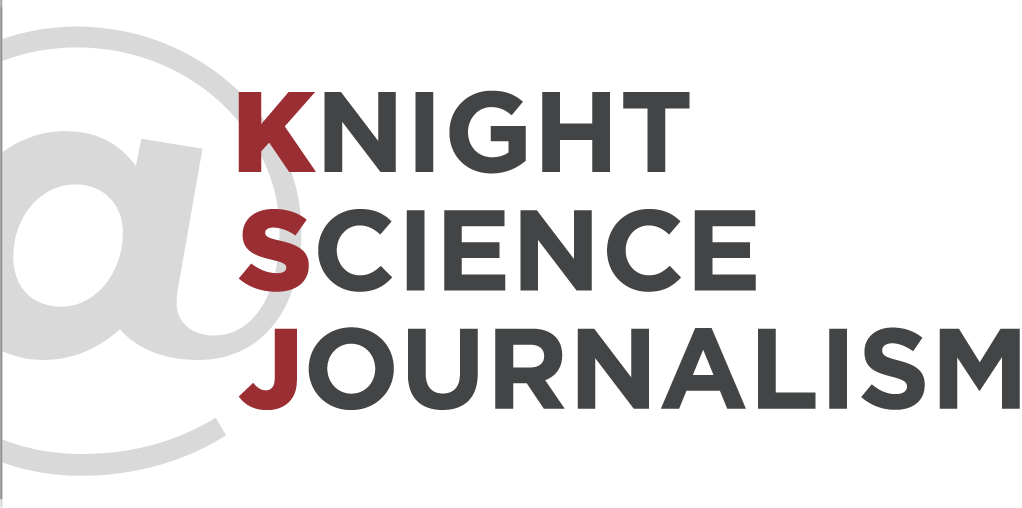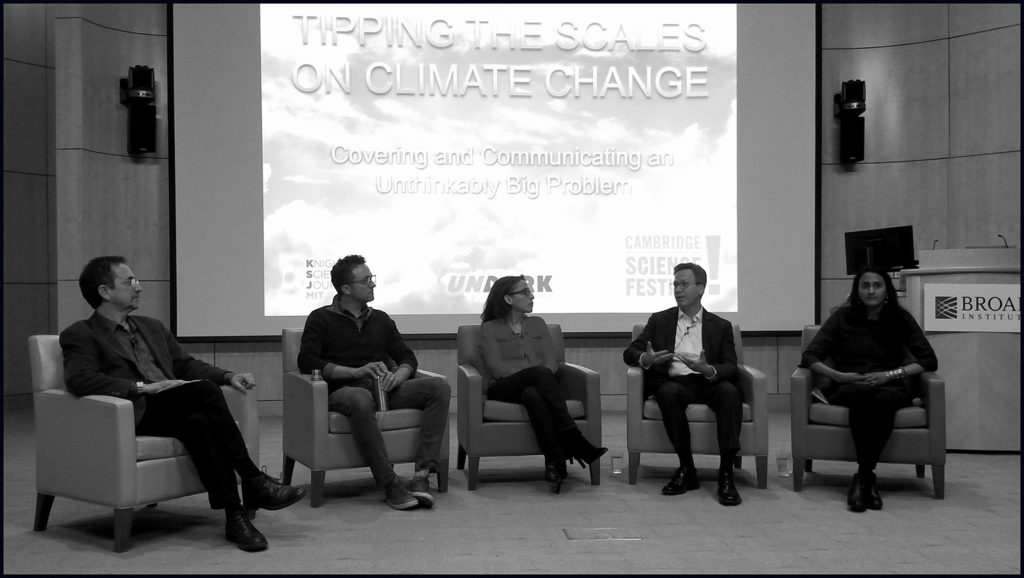The event, sponsored by the Knight Science Journalism Fellowship at MIT and Undark, was held as part of the 2019 Cambridge Science Festival. After four competitive rounds and three bonus questions, emcee John Durant announced that the winning team was “The Grapes of Staph,” a group of friends and microbiologists from Massachusetts General Hospital who were joined by KSJ Fellow Rachel E. Gross.
The Climate Is Changing. How to Make People Care?
How can we make a monster problem more manageable? This was the conundrum facing participants at “Tipping the Scales on Climate Change,” an April 20 panel discussion sponsored by KSJ and Undark as part of the Cambridge Science Festival.
At the Cambridge Science Festival, KSJ and Undark Focus on Climate Change
An all-star lineup led by Andrew Revkin, of New York Times and ProPublica fame, and an excerpt from Ian Cheney’s documentary “The Measure of a Fog.” fst


 "
" "
" "
"